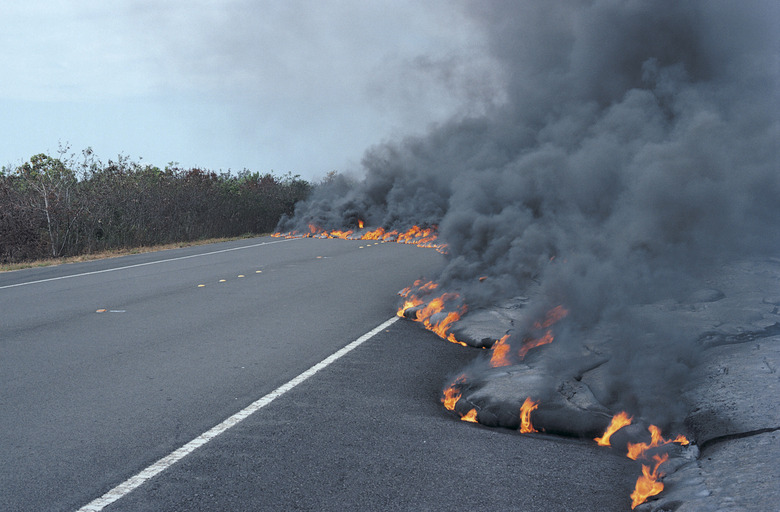Instruments Used To Monitor Volcanoes
Despite the use of cutting-edge technology and ongoing research, the ability to predict exactly when a volcano will erupt is still not perfect. Several techniques that have been developed include satellite monitoring, measuring seismic and gas activity at ground level, observing changes and deformities in the Earth's crust and hydrological analysis. Each of these techniques requires a different instrument to monitor volcanic activity. Understanding how volcanoes behave and predicting possible eruptions improves public safety.
Satellites
Satellites
Orbiting satellites monitor volcanoes from space, providing vital information and signs of possible eruption. Satellites use cameras to provide images and photos. They also provide information from special sensors that can detect heat, sulfur dioxide and even tiny changes in the shape of the Earth's surface. All of this information can offer clues to as to whether an eruption is imminent.
Seismographs
Seismographs
Seismographs measure movement in the planet's crust. Volcanic eruptions are closely related to the seismic activities that also cause earthquakes and tremors, so seismographs are also often used to monitor volcanoes. As the tectonic plates scrape and slide against each other or move apart, they cause vibrations and tension. A violent seismic reading is often a precursor to an eruption when it occurs near a volcano.
Tiltmeters
Tiltmeters
Similar to spirit levels, tiltmeters are positioned on and around a volcano. A small container of liquid shows how much the ground moves. The tiltmeters are connected to computers that monitor ongoing changes in the landscape. Changes in the landscape and deformations at ground level are often predictors of volcanic activity. Magma movements beneath the ground can cause visible bulging and hollows to form. These changes offer vital clues about volcanic activity under the ground.
Hydrology Instruments
Hydrology Instruments
Hydrology is the study of water flows and groundwater. Hydrologists use pressure sensors, water detectors, maps and the naked eye to gather data. Measuring the hydrology on volcanoes has two purposes. Monitoring water changes can provide clues about the activity of a volcano. A sudden change could predict a volcanic eruption. Hydrologists also identify the paths that water takes as it flows down a volcano's side. Understanding how water flows can help us understand how lava might flow. This can help emergency services decide where and when to evacuate if an eruption occurs.
Gas Trapping Bottles
Gas Trapping Bottles
Volcanoes emit gases, so measuring gas emissions around volcanoes can also provide useful information about changes in behavior that could indicate an eruption in the making. The instruments used to do this are typically trapping bottles wherein local air is pumped into containers and then analyzed in a lab. As magma moves towards the surface of the earth, the pressure releases gas. The two most abundant gases are sulfur dioxide and carbon dioxide, and if levels of these gases increase, it shows that magma is rising to the surface and an eruption is more likely.
Cite This Article
MLA
Wilson, Daniel. "Instruments Used To Monitor Volcanoes" sciencing.com, https://www.sciencing.com/instruments-used-monitor-volcanoes-6401014/. 24 April 2017.
APA
Wilson, Daniel. (2017, April 24). Instruments Used To Monitor Volcanoes. sciencing.com. Retrieved from https://www.sciencing.com/instruments-used-monitor-volcanoes-6401014/
Chicago
Wilson, Daniel. Instruments Used To Monitor Volcanoes last modified March 24, 2022. https://www.sciencing.com/instruments-used-monitor-volcanoes-6401014/
